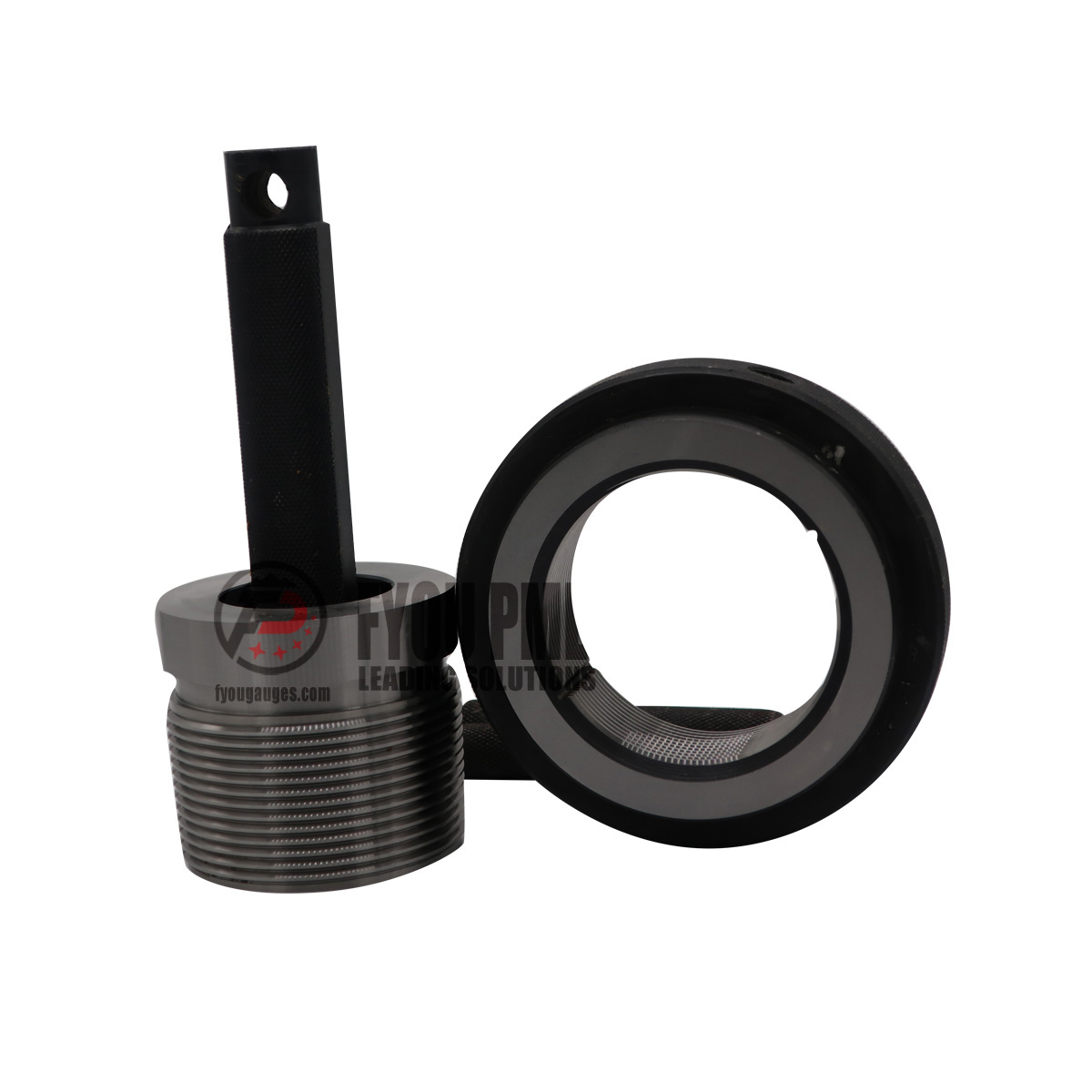Non-Upset Tubing – NUE/NUT Thread Plug and Ring Gages
FYOU PMEC, provides EUE and NUE 8 and 10 round tubing working gauges and reference master gages per API Specification 5B for sizes from 1.050 to 4-1/2 inches in diameter. All working gages are manufactured and certified using a certified API reference master gages as required by the standard.
| NON-UPSET (N.U.E) TUBING WORKING/MASTER/TAPER GAGES | |||||
| SIZE | Outer Dia. | T.P.I | T.P.F | TAPER | ANGLE |
| 1.050 NUE/TBG | 26.67 | 10 | 3/4 | 1:16 | 60° |
| 1.315 NUE/TBG | 33.40 | 10 | 3/4 | ||
| 1.660 NUE/TBG | 42.16 | 10 | 3/4 | ||
| 1.900 NUE/TBG | 48.26 | 10 | 3/4 | ||
| 2 3/8 NUE/TBG | 60.33 | 10 | 3/4 | ||
| 2 7/8 NUE/TBG | 73.03 | 10 | 3/4 | ||
| 3 1/2 NUE/TBG | 88.90 | 10 | 3/4 | ||
| 4 NUE/TBG | 101.60 | 8 | 3/4 | ||
| 4 1/2 NUE/TBG | 114.30 | 8 | 3/4 | ||
To use NUE/NUT tubing, the following steps are recommended:
- Select the appropriate size, grade, and weight of NUE/NUT tubing according to the well conditions and the production requirements. The API Spec 5B provides a table of tubing sizes, ranging from 1.050 to 4.5 inches in diameter, and the corresponding threads per inch (TPI), ranging from 8 to 10.
- Inspect the tubing and the coupling threads for any damage, corrosion, or defects. Use a thread plug and ring gage to check the thread dimensions and tolerances. The gage should conform to the API Spec 5B and be certified by a qualified laboratory.
- Apply a suitable thread compound to the pin and box threads of the tubing and the coupling. The thread compound should be compatible with the tubing material and the well fluids, and provide adequate lubrication and corrosion protection.
- Align the tubing and the coupling, and make up the joint by hand until the pin shoulder contacts the box face. Use a torque wrench or a power tong to apply the recommended torque to the joint. The torque value should be based on the tubing size, grade, and thread compound. Do not over torque or under torque the joint as this may cause leakage or failure.
- Lower the tubing into the wellbore, and connect it to the surface equipment and the downhole tools. Perform a pressure test to verify the integrity of the tubing and the joints. Monitor the tubing performance and condition during the well operation, and replace any damaged or worn-out tubing as needed.

